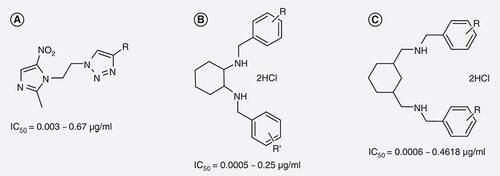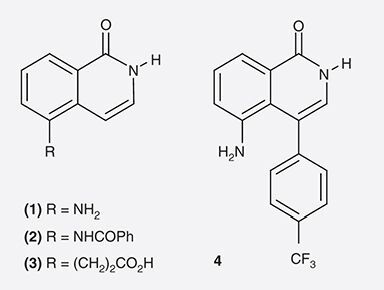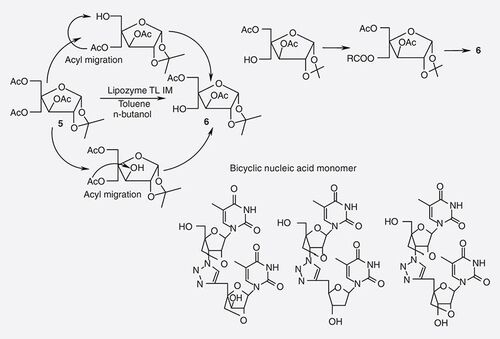Abstract
To commemorate 2011 as the International Year of Chemistry, the Indian Society of Chemists and Biologists organized its 15th International Conference on ‘Bridging Gaps in Discovery and Development: Chemical and Biological Sciences for Affordable Health, Wellness and Sustainability’ at Hotel Grand Bhagwati, in association with Saurashtra University, Rajkot, India. Anamik Shah, President of the Indian Society of Chemists and Biologists, was organizing secretary of the conference. Nicole Moreau, President of the International Union of Pure and Applied Chemistry and Secretary General of the Comité National de la Chimie, National Centre for Scientific Research France, was chief guest of the function. The four-day scientific program included 52 plenary lectures, 24 invited lectures by eminent scientists in the field and 12 oral presentations. A total of 317 posters were presented by young scientists and PhD students in three different poster sessions. Approximately 750 delegates from India, the USA, UK, France, Switzerland, Germany, Austria, Belgium, Sweden, Japan and other countries attended the conference. The majority of the speakers gave presentations related to their current projects and areas of interest and many of the talks covered synthesis, structure–activity relationships, current trends in medicinal chemistry and drug research.
Figure 3. (A) Metronidazole-triazole conjugates. (B) Cyclohexane-1,2-diamine derivatives. (C) Cyclohexane-1,3-diamine derivatives.

Antibacterial screening of natural & synthetic products
Nicole Moreau, President of the International Union of Pure and Applied Chemistry (IUPAC) and Secretary General of the Comité National de la Chimie, National Centre for Scientific Research (CNRS), France, delivered a lecture on screening natural and synthetic products for biological activity. She stated that in an organic chemistry laboratory, researchers are supposed to synthesize or extract products, design new reactions, but not assay their molecules or extracts for biological activity. However, all the compounds synthesized or extracted constitute a nonexploited source of potentially active molecules. She said at the CNRS in France, approximately 100 laboratories are more or less involved in extraction or synthesis. If each of them prepared or extracted between ten and 100 substances each year, there must be between 1000 and 10,000 compounds ‘sleeping in drawers’. She also noted that her laboratory has access to many French and foreign locations where there is high biodiversity. To make use of all these compounds, the CNRS decided a few years ago to organize a national library of synthetic compounds, and of natural extracts and pure molecules called the ‘Chimitotheque Nationale’. This library constitutes a reservoir of potentially active compounds, which she observed can be helpful in accelerating the process of discovering of potentially active molecules.
Heterocyclic chemistry at the edge of biology & medicine: past present & future of Wsg1060
Colin Suckling (University of Strathclyde, Glasgow, UK) discussed Wsg1060, a member of a family of so-called blocked dihydropterins first synthesized at Strathclyde in the 1970s in a project initiated by the late Hamish Wood aimed at the discovery of inhibitors of folate biosynthesis as potential antibacterial compounds. Apart from its unusual tricyclic structure, Wsg1060 did not show any remarkable properties, although its simpler bicyclic analog, Wsg1002 , was shown to be synergistic with methotrexate in antibacterial assays. With one exception, a cyclopropane-containing irreversible inhibitor of dihydrofolate reductase, the chemistry of this class of compounds lay dormant until the mid-2000s, by which time it was well established that tetrahydrobiopterin BH4 is the naturally occurring cofactor for several oxidation reactions including aromatic amino acid biosynthesis and nitric oxide synthesis. All of these reactions have been implicated in a number of pathologies.
During the lecture, Suckling presented the activation of nitric oxide synthases by analogs of BH4, his group’s results demonstrating that a number of blocked dihydropterins, including Wsg1002, are activators of iNOS in macrophages and endothelial nitric oxide synthase in endothelial cells. Suckling discussed in vivo studies that suggest that blocked dihydropterins may have a role as drugs to treat cardiovascular disorders. New leads against Gram-negative bacteria are rare.
Synthesis of bioactive natural products & designed structural analogs
Gree Rene (CNRS, France) discussed a new transition metal-catalyzed interconversion of sugars into functionalized and chiral carbocycles. He discussed how corresponding cycloalkenones are very useful intermediates in the synthesis of various bioactive molecules. In addition, he reported the synthesis of the natural products nikkomycin and funebrine as well as aminocyclitol compounds. He also reported the activity of Embelin analogs as anticancer, antibacterial and anthelmintic agents.
Opportunities & challenges in natural product synthesis for drug discovery
JS Yadav (Indian Institute of Chemical Technology, Hyderabad, India) discussed the critical role that natural products play in drug discovery. He highlighted that over 130 drugs have been introduced onto the market in recent decades from natural sources. In addition, over 70% of the world’s population depends on crude plant-drug preparations, which are simply the combination of several natural products. Furthermore, several natural product analogs and derivatives have been introduced by various pharmaceutical industries, for example, camptothecin and its derivatives, taxol and its derivatives, compactin and its derivatives, and several others.
Isoform-selective inhibitors of PARP-2: design, synthesis & evaluation
Michael D Threadgill (University of Bath, UK) presented a poly(ADP-ribose) polymerase, PARP-2, which has some activities similar to those of PARP-1, but with other distinct roles. Nonisoform-selective inhibitors are in clinical trials for the treatment of cancer. Isoform-selective inhibitors would enable studies on the specific roles of PARP-2 in the mammalian cell. Threadgill discussed a series of isoquinolin-1-ones (1–4; ) as selective inhibitors of PARP-2, using the x-ray structures of the isoforms. The most selective PARP-2 inhibitors were 2 and 4. These compounds demonstrated greater selectivity than the reported lead, 5-aminoisoquinolin-1-one (1), in a comparative study.
Fabrication & applications of hierarchically ordered nano/macroporous films & powders
Ajayan Vinu (International Center for Materials Nanoarchitectornics, Tsukuba, Japan) presented on the subject of carbon nitride (CN). He discussed the fact that the incorporation of nitrogen atoms in a carbon nanostructure can enhance the mechanical, conducting, field emission and energy storage properties. He said that CN materials with five different structures have been predicted so far: one is 2D graphitic C3N4 and four are 3D CNs, namely α-C3N4, β-C3N4, cubic-C3N4 and pseudocubic-C3N4. Vinu discussed that among the CN materials, β-C3N4 and its allotropic-cubic and pseudo-cubic phases, are superhard materials, whose structure and properties are expected to be similar to those of diamond and β-Si3N4. Vinu highlighted how, owing to the unique properties of CN, including semiconductivity, intercalation ability and hardness, it is regarded as a promising material that could find potential applications in many fields. CN materials without a porous structure can be prepared either from molecular or chemical precursors at very high temperatures. He noted that the construction of CN materials with porous structure may provide novel applications: from catalysis, to separation and adsorption of very bulky molecules, to the fabrication of low dielectric devices. He presented a new concept of making nanoporous CN materials using a hard templating approach in which nanoporous silica was used as a template. He presented the fabrication of nanoporous CN nanoparticles with a size smaller than 50 nm, which were prepared using silica nanoparticles as templates. Vinu discussed that one of the important features of the materials is that they have inbuilt basic sites in the form of NH2 or NH groups, and can be used as a metal-free basic catalyst. These functional moieties on the surface of the nanoporous materials not only provide the basic sites for the catalytic reactions but can also be used as an adsorbent for CO2 molecules, stabilizer and reducing agent for the fabrication of the metal nanoparticles with ultra-small size. Vinu discussed the basic catalytic efficiency of the materials in the synthesis of caprophenone, transesterification of β-ketoesters with different alcohols, aldol and Knoevenagel reactions and their ability to capture acidic CO2 molecules. He also briefly discussed the different ways of preparing nanoporous carbon materials with various structure types, especially, “carbon nanocage and carbon nanocoops”. He also outlined methods of tuning the pore diameters and textural parameters, and different ways of adding new functions on the surface of the nanoporous carbon materials. Finally, Vinu highlighted the function of nanoporous materials in various fields such as sacrificial template, adsorption and separation, fuel cells, sensing, catalysis and magnetism.
Synthesis & antimicrobial activity of cyclohexane-1,2- & 1,3-diamine derivatives & metronidazole–triazole conjugates
Diwan Singh Rawat (Department of Chemistry, University of Delhi, India) discussed the synthesis of metronidazole–triazole conjugates and cyclohexane-1,2- and 1,3-diamine derivatives as anti-infectious agents against protozoa such as Trichomonas vaginalis, Entamoeba histolytica, Giardia intestinalis and infections caused by Gram-negative and Gram-positive anaerobes and bromhexine, a mucolitic agent used in the treatment of respiratory disorders associated with viscid or excessive mucus. He highlighted that the structural modification of these two classes of compounds leads to the production of potent antimicrobial agents. The detailed synthetic methodology and antimicrobial activity of these compounds was presented during the talk.
Discovery of therapeutics for spinocerebellar ataxia type 1
Ramaiah Muthyala (University of Minnesota, USA) gave a presentation on spinocerebellar ataxia type 1 (SCA1). SCA1 is a fatal neurodegenerative disorder usually presenting in the third or fourth decade of life. The part of the brain associated with coordinating movement breaks down; interrupting walking, speech and eventually even swallowing. It has an incidence rate of just under one in 100,000. There is currently no treatment or cure for SCA1, although stem cell research may offer solutions in the future. SCA1 presents, initially, as gait abnormalities and later progresses to widespread dysfunction of the cerebellum and brainstem, eventually leading to death 10–15 years after onset. The ultimate goal of research in this area is the development of effective treatments for SCA1. During his talk, Muthyala observed that SCA1 is caused by a CAG triplet repeat expansion, leading to a polyglutamine expansion mutation in the ataxin-1 protein. Studies show that at least three things are necessary for SCA1 pathology: an expanded polyglutamine repeat on ataxin-1; entry of ataxin-1 into the nucleus; and phosphorylation of ataxin-1. The focus of the presentation was the phosphorylation of ataxin-1 as a therapeutic target.
Sustainable route to modified nucleosides & nonionic nucleoside dimers of importance in healthcare
Ashok Prasad (University of Delhi, Delhi, India) gave a talk on the subject of deoxyribose and ribose sugars, which are important components of nucleic acids. The discovery of sugar-modified nucleoside derivatives as potential antiviral agents and the emergence of antisense and antigene oligonucleotides as potential and selective inhibitors of gene expression have led to a considerable rise in the synthesis of modified-nucleoside derivatives. He said that the intrinsic problem in such synthesis is the selective manipulation of different hydroxyl and amino functions present in the compound under mild reaction conditions. He presented that his group has developed an efficient biocatalytic methodology for the selective manipulation of different hydroxyl groups in the sugar during the synthesis of nucleosides of biological importance .
Environmentally sustainable technique for the production of bioactive compounds from agriculture wastes
Brajesh Kumar (Konkuk University, Seoul, Republic of Korea) highlighted during his talk that agricultural, forestry and food industries produce tons of waste materials and byproducts every year, including onion skin, apple peel, carrot waste and birch bark. The waste and byproducts produced are currently used in animal feed or for composting, incineration or anaerobic digestion. He highlighted that these waste materials and byproducts contain high-value compounds, such as antioxidants, that could be extracted before the waste reaches its final destination. Waste and byproducts from fruits and vegetables are rich in antioxidants, including polyphenols, which have uses as additives in pharmaceuticals, food products and cosmetics. He observed that modern extraction techniques have been widely investigated to discover a mechanism of obtaining such valuable natural compounds from agricultural wastes for commercialization. He suggested that these extracted compounds are further modified to other bioactive compounds. The development of faster, simpler, inexpensive and more environmentally friendly extraction and separation techniques is an important issue in food chemistry. He suggested that quantitatively microwave-assisted, ultrasound-assisted and ionic liquid-based extractions are all improved extraction methods with high efficiency in extraction time and environmentaly friendly.
Efficient approach to the synthesis of novel heterocycles
Dong-Soo Shin (Changwon National University, Sarim-dong, South Korea) discussed novel optical N-substituted-2H-pyrido[b][1,4]oxazin-3(4H)-ones, N-substituted-2H-benzo[b][1,4]oxazin-3(4H)-ones and N-substituted-2H-benzo[b][1,4]thiazin-3(4H)-ones with potential synthetic and pharmacological interest, which were designed and synthesized via Smiles rearrangement using different methods including conventional heating and microwave irradiation by one step and via one-pot synthesis. Investigation on reaction time, yield and purification procedure showed that the synthesis under microwave irradiation was a much more efficient method to obtain N-substituted-2H-benzo[b][1,4]oxazin-3(4H)-one, N-substituted-2H-benzo[b][1,4]thiazin-3(4H)-one and N-substituted-2H-pyrido[b][1,4]oxazin-3(4H)-one derivatives.
Shin also presented on the synthesis of (R,R)/(S,S)-2,2-dimethyl-2,7-dihydro-1H-oxireno[2,3-c] chromene and their derivatives. He discussed the design and synthesis of cromakalim derivatives, an important molecule that shows specific affinity towards potassium channels.
Novel substituted 1H-benzo[d]imidazole-2-carboxamide derivatives as selective & oral CB2 agonists for the prevention of allodynia in rat neuropathic pain models
Brijesh Kumar Srivastava (Zydus Research Centre, India) highlighted CB2 receptor agonists for the treatment of neuropathic pain. In his presentation, he described the pharmacological characterization of 1H-benzo[d]imidazole-2-carboxamide derivatives (7; ), and their functional activity and selectivity against human CB2 receptors using cAMP assay. The lead compound attenuated tactile allodynia produced by spinal nerve ligation in a dose-related manner. These results show promise for this class of compounds as potent CB2 agonists in the treatment of neuropathic pain.
Indian Society of Chemists and Biologists awards for the 2011
The Indian Society of Chemists and Biologists (ISCB) awarded Katsuhiko Ariga (World Premier International Research Center for Materials Nanoarchitectonics) and Krishna Kumar (Tufts University, Medford, MA, USA) the 2011 ISCB award for excellence in chemical sciences. Vikash Kumar Dubey (Indian Institute of Technology Guwahati, Assam, India) received the ISCB Young Scientist award in biological science.
To commemorate the centenary of Marie Curie’s Nobel Prize in Chemistry, the ISCB created the ISCB Distinguished Women Scientists award. The recipient of this award for 2011 was Rukhsana Kureshy (Central Salt and Marine Chemicals Research Institute, Bhavnagar, India).
Valedictory function
The chief guest of valedictory function was her Excellency Shrimati Kamla, the Governor of Gujarat. During her address, she highlighted that the 20th Century remained the century of exploitation, where mankind and nature became victims of exploitation, leading to a global imbalance and creating a gulf between the affluent and poor classes, that is, increasing the gap between the developed and developing countries. She said that in this century, we must endeavor to bridge the gap, to strike an ideal balance. India is set to increase its eminence in the global arena, however, the majority of the world’s population in India, south east Asia and many other countries are facing acute health and malnutrition problems. She said various diseases like malaria, leishmaniasis, tuberculosis, swine flu, chikungunya and dengue fever represent a big challenge for the common man to survive, which also affects the productivity of any nation and results in a direct impact on the economy of a nation. She appealed to all the delegates of the international conference to follow the principle of Gandhian philosophy; when new drugs, vaccines or cures for diseases are developed, the poorest of the poor should benefit from your research.
Conclusion
Affordable drugs for the poor are only possible if scientists from industry and academia bridge the gaps in discovery and development. To achieve this goal, scientists need to interact closely from chemical sciences and biological sciences. Apart from eminent academics, a number of professionals from the pharmaceutical and biotechnology industry also actively participated and shared their ideas and built new networks.
Looking ahead
The next conference in the series, “Expanding Horizons in Chemical and Biological Sciences: Innovations Crossroads”, will be held on 21–24 January 2012 at Solapur University, Solapur, Maharashtra, India.
Financial & competing interests disclosure
The author has no relevant affiliations or financial involvement with any organization or entity with a financial interest in or financial conflict with the subject matter or materials discussed in the manuscript. This includes employment, consultancies, honoraria, stock ownership or options, expert testimony, grants or patents received or pending, or royalties.
No writing assistance was utilized in the production of this manuscript.




![Figure 6. Novel benzo[d]imidazole-2-carboxamide derivatives.](/cms/asset/a188f095-2d42-45be-9e06-31d3d6b74a34/ifmc_a_12362643_f0006.jpg)